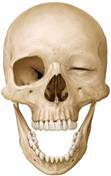A collection of brand new Library acquisitions are displayed on the New Books Shelf on the third floor (near the Reference Stacks). These titles can be checked out!
World Health Organization. Promoting safety of medicines for children (2007).
Robertson, Jason. The Harriet Lane Handbook: a manual for pediatric house officers (2009).
Tiidus, Peter M. Skeletal muscle damage and repair (2008).
Metcalfe, Dean D. Food Allergy: adverse reactions to foods and food additives (2008).
Alfaro-LeFevre, Rosalinda. Applying Nursing Process: a tool for critical thinking (2010).
Hersh, William R. Information Retrieval: a health and biomedical perspective (2009).
Runge, Marschall Stevens. Netter’s Internal Medicine (2009).
Perloff, Joseph K. Congenital Heart Disease in Adults (2009).
Klugman, Craig M. Ethical Issues in Rural Health Care (2008).
Ferrell, Betty Rolling. The Nature of Suffering and the Goals of Nursing (2008).
Davis, Carol M. Complementary Therapies in Rehabilitation (2009).
McLaughlin, M. Maureen Kirkpatrick. Real Stories of Nursing Research: the quest for Magnet recognition (2010).
Moser, Debra. Cardiac Nursing: a companion to Braunwald’s heart disease (2008).
Ball, Jane. Child Health Nursing: partnering with children & families (2010).
Charney, Dennis S. Neurobiology of Mental Illness (2009).
Vandiver, Vikki. Integrating Health Promotion and Mental health (2009).
Gatrell, Anthony C. Geographies of Health: an introduction (2009).
Gunn, William A. Concepts and Practice of Humanitarian Medicine (2008).

 myLSUHSC
myLSUHSC